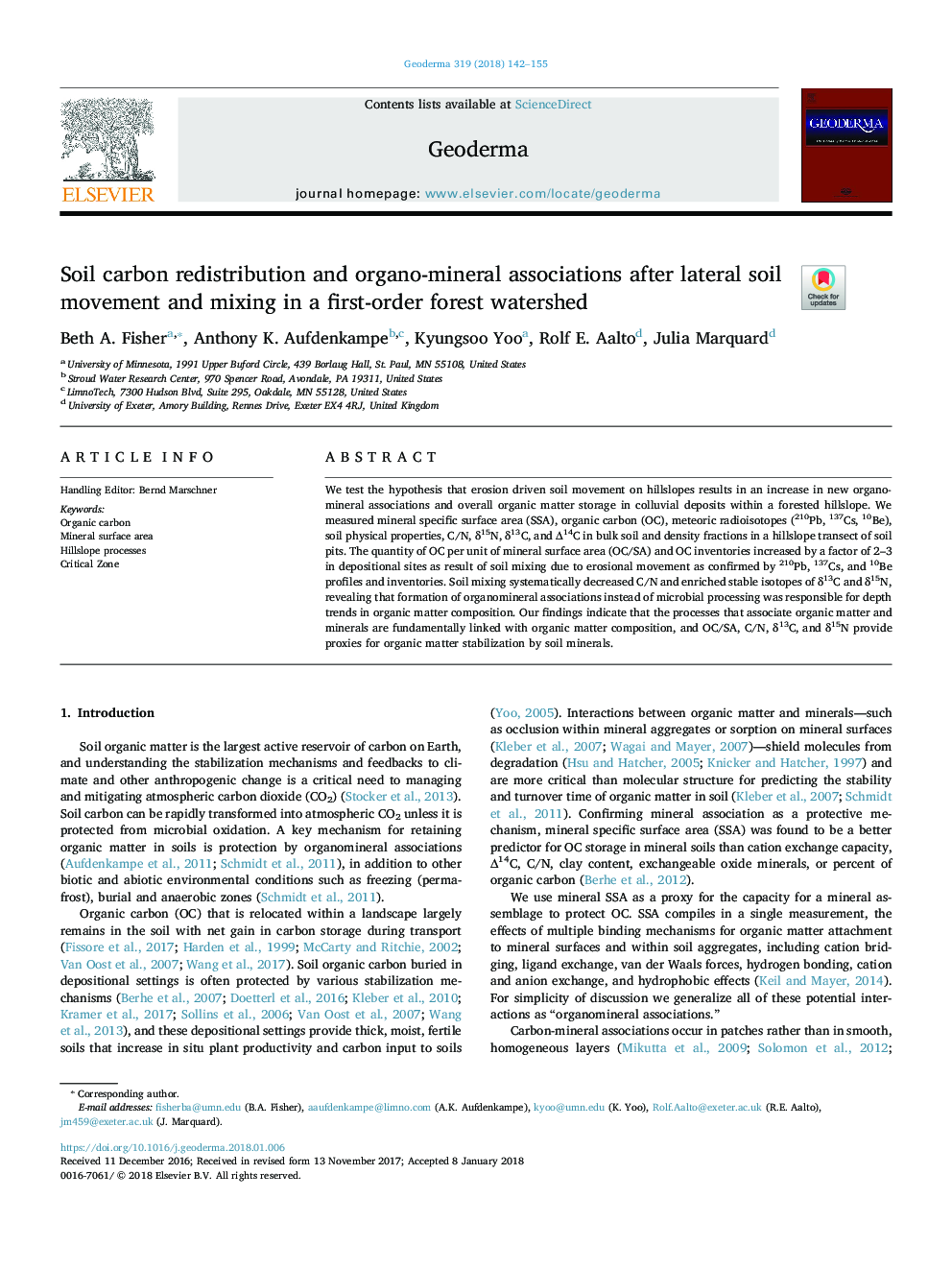| Article ID | Journal | Published Year | Pages | File Type |
|---|---|---|---|---|
| 8894159 | Geoderma | 2018 | 14 Pages |
Abstract
We test the hypothesis that erosion driven soil movement on hillslopes results in an increase in new organomineral associations and overall organic matter storage in colluvial deposits within a forested hillslope. We measured mineral specific surface area (SSA), organic carbon (OC), meteoric radioisotopes (210Pb, 137Cs, 10Be), soil physical properties, C/N, δ15N, δ13C, and â14C in bulk soil and density fractions in a hillslope transect of soil pits. The quantity of OC per unit of mineral surface area (OC/SA) and OC inventories increased by a factor of 2-3 in depositional sites as result of soil mixing due to erosional movement as confirmed by 210Pb, 137Cs, and 10Be profiles and inventories. Soil mixing systematically decreased C/N and enriched stable isotopes of δ13C and δ15N, revealing that formation of organomineral associations instead of microbial processing was responsible for depth trends in organic matter composition. Our findings indicate that the processes that associate organic matter and minerals are fundamentally linked with organic matter composition, and OC/SA, C/N, δ13C, and δ15N provide proxies for organic matter stabilization by soil minerals.
Related Topics
Physical Sciences and Engineering
Earth and Planetary Sciences
Earth-Surface Processes
Authors
Beth A. Fisher, Anthony K. Aufdenkampe, Kyungsoo Yoo, Rolf E. Aalto, Julia Marquard,
